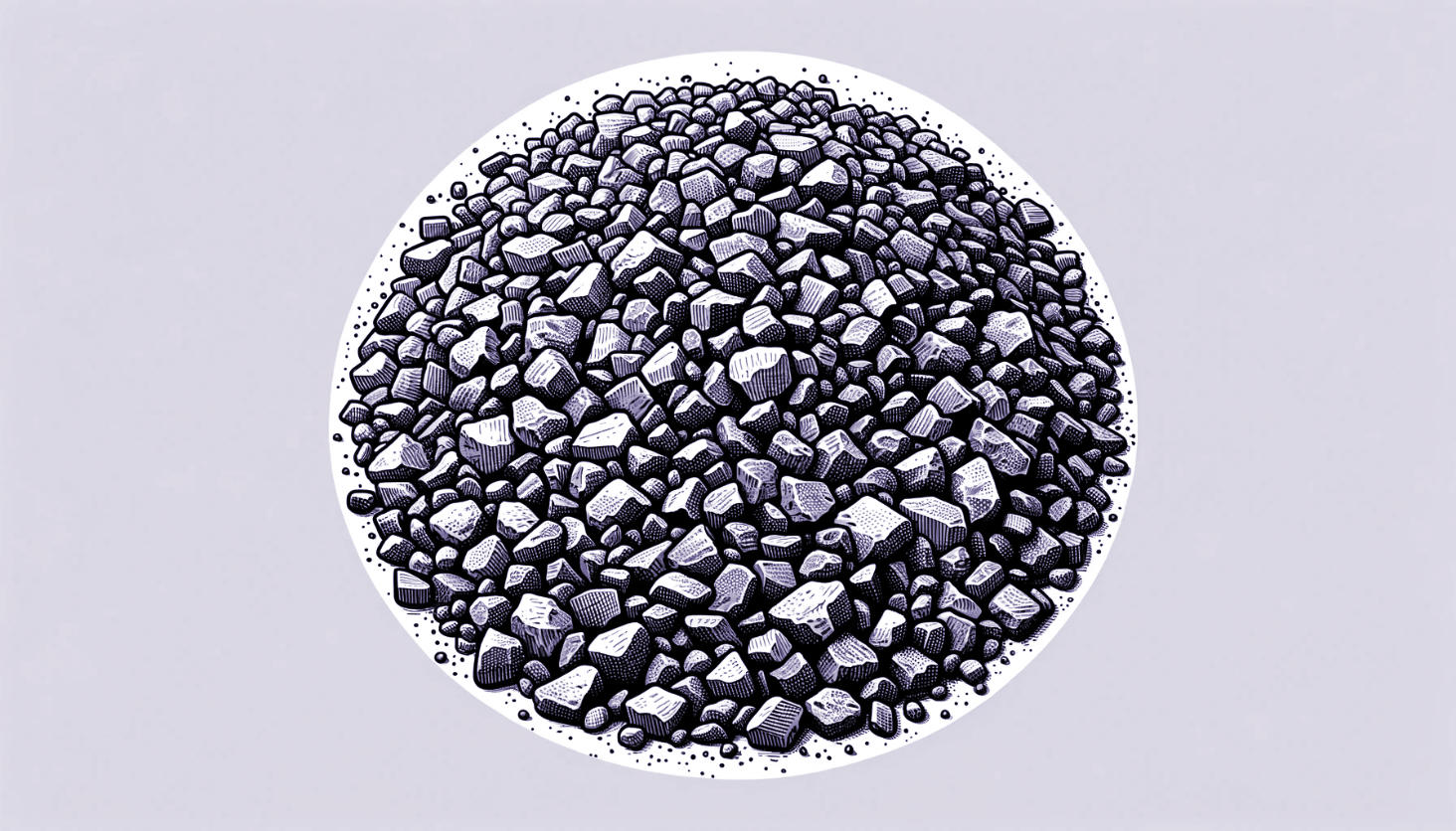The Stone Base is the Most Important Aspect of Patio Durability

Our Approach to Depth, Materials, and Techniques
As we've discussed in other articles, Winnipeg has a lot of ground movement.
This causes all kinds of problems for roads, driveways and hardscapes of all kinds.
In landscaping, we do have to accept some movement of the ground no matter what we do. This is why we always build with flexible interlocking brick systems. But if you just put those bricks directly on the soil or on some thin layer or gravel or sand, they'll shift around so much that your patio will either have weird hills or require frequent maintenance.
The secret to a long-lasting patio lies in the stone base beneath it. In this article, I’ll share why base depth is so important, walk you through our step-by-step process, and explain how my methods have evolved through decades of hands-on work in Winnipeg’s unique conditions.
Evolution of Our Patio Base Techniques
When I was a teenager, I spent time leveling patio slabs outside my parents’ back door. Those slabs were laid straight on dirt and they were constantly moving up and down with seasonal changes in the soil moisture content. My dad and I lifted the slabs every couple years, and put in a thin layer of sand for drainage, but it was never a permanent solution.
Early Landscaping Experience
A few years later, I got my first job with a landscaping company here in Winnipeg. We would build small patios with slabs set on a 3- to 4-inch deep base of hand-tamped 1/4” down limestone. This produced better results than a thin layer of sand, but still it was not long before those patio slabs were shifting and uneven.
Finding the Right Depth for Winnipeg’s Climate
After starting Earthworks in 1998, I did more research to find the optimal base depth for our climate and geography. With our extreme temperatures and heavy clay soils, we found that a 6-inch deep stone base was that minimum for a reasonably stable patio. This was not a perfect solution for all situations. We still saw some shifting on some jobs, especially on properties close to the rivers, where the sub soil seems to be less stable.
About a decade ago, we started to promote an increased base depth of 8 inches. More on that later in the article.
Adding Geogrid
Last summer, we added something called geogrid to some of our patios. This is a polyester mesh that acts much like rebar does for poured concrete, reinforcing the stone base and increasing long term stability. When combined with the 8-inch base depth, it brings us as close to a zero-maintenance patio as I have seen.
The Basic Principles of Patio Bases
The basic idea is to:
- remove the organic material from below the patio, and
- replace it with inorganic material
Organic material is what absorbs water and therefore changes in volume. But 3/4"-down crushed limestone has excellent drainage properties, allowing moisture to drain away from the surface of the patio where it can do the most damage.
How to make a stable patio base, step-by-step
This assumes a 6-inch base. Add 2 inches for the 8-inch base!
Step 1: Excavation
We start by excavating the area to 8 inches below the planned finish grade of the patio. 6 inches for the base, 2 inches for the surface pavers.
Even at this early stage, we are thinking about water drainage, so the bottom of the excavation is given a 1.5% slope to ensure water is directed away from your house or garage.
Step 2: Compacting the Subsoil
Ensuring proper compaction at every stage is essential, so when excavation is complete we compact the entire area with a jumping jack compactor. This is a compactor designed for use on heavy clay soils like Winnipeg's. Using this tool ensures that there are no soft spots in the sub-soil that would result in settling of the completed patio.
Step 3: Installing Geotextile
With the sub-soil fully compacted, we install a layer of geotextile as a separator between the sub-soil and the stone base we are about to make.
Step 4: Adding and Compacting Crushed Limestone
3/4” down crushed limestone is then placed in 2- to 3-inch layers. Each layer is compacted with a vibratory plate compactor before adding more stone. Two or three layers of compacted stone will bring us very close to our target depth of 6 inches.
Step 5: Refining the Grade
At this point we refine the grade of the patio with a thin layer of 1/4” down limestone, preparing for the installation of your chosen paver (the surface bricks).
Why crushed gravel?
Crushed gravel can be compacted into an incredibly hard, strong surface. And even after it is compacted it still allows water to flow through. These two combined traits make it ideal.
Extended Base for Stability
We always extend the stone base beyond the planned dimensions of the patio, walkway or driveway. This adds additional stability, particularly at the edges of the structure, preventing potential issues like edge cracking or a gradual caving (ie. subsidence).
Geogrid
As mentioned earlier, we can optionally add a polyester mesh within the stone base. This product is called Geogrid. It acts much like rebar does for poured concrete, reinforcing the stone base significantly.
Geotextile membrane
As a barrier between the stone base and the clay sub-soil, we always install a geotextile membrane, sometimes called landscaping fabric. The geotextile is a water-permeable fabric that allows water to drain out of the base stone while preventing the clay sub-soil from mixing with the foundation.
Selecting a Base depth for a patio
Increasing the depth of the compacted stone base under your patio is the best way to increase the strength and durability of your patio, but every inch of base depth adds to the cost of the project. It requires more excavation, more material to be hauled away, and more stone to be put in its place.
Our experience has shown that the “sweet spot” is around 6 inches of base depth. In most situations, this is just enough stone base to isolate the patio surface from the movement of the sub soil, minimizing surface movement and future maintenance requirements. This is what we use for roughly 80% of the patios we build.
We guarantee our work for 5 years so we actually know what's working and what isn't. We do minor warranty work on about 10% to 15% of the patios we build. In most cases this involves very minor movement that reveals itself in hairline cracks in the polymeric sand that filled the spaces between pavers.
The repair is simple. We return and add a little more polysand to fill those cracks and seal out dirt and debris. In extremely rare cases (only twice in the last 27 years), we have seen more movement in a section of patio that required a little more effort. In cases like that we just remove a few pavers, re-level and re-compact the base, and then re-install the pavers with new polysand, for an invisible repair.
The point is that in the vast majority of cases the patio has no issue what-so-ever a 6 inch base depth and for the ones that do need attention, it so minor that it would not justify the added cost of more depth even if we were going to do the job over again.
But adding another two inches to the depth does add a lot more stability and we definitely recommend it in situations such as homes near Winnipeg's rivers.
For extreme durability, go with an 8-inch base and Geogrid
For those who want a truly maintenance-free patio, we will increase the base depth to 8 inches, and add a layer of geogrid to the base.
Although an extra 2 inches of stone base may not seem like a lot, it actually yields a significant increase in strength and stability.
The geogrid and extra base depth adds about 10 to 15 percent to the cost of the patio, and virtually eliminates any callbacks we get. That's how we know how incredibly stable it is.
Conclusion
Doing all of this reduces ground movement under a patio and walkway to a degree that interlocking brick systems can tolerate. We've been in business for 27 years and have seen what works and what doesn't. We're also on the hook for our 5-year guarantee so we have certainly been motivated to find the most reliable ways to build.
In one sentence, a deep, non-absorbent, draining, very hard-packed foundation beneath a flexible interlocking brick system is how to build a hardscape that lasts!



